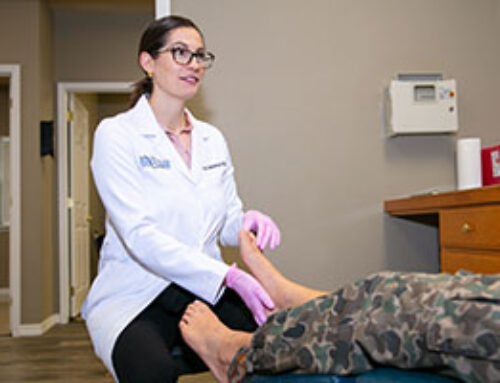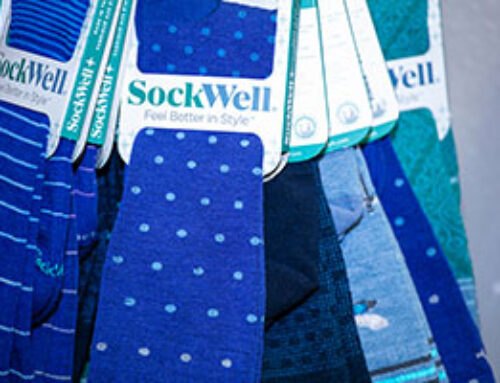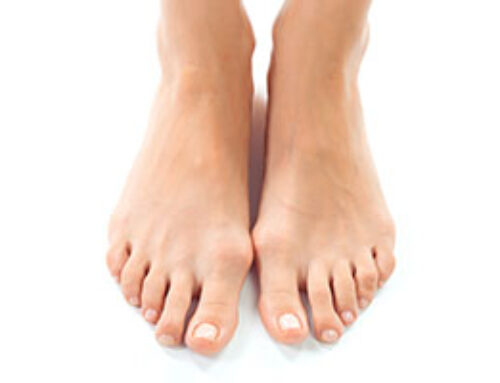It’s no secret that women are built differently than men. Their unique physiology makes them more prone to foot problems; in fact, it’s been estimated that women suffer from four times as many foot conditions. Most of these problems do not exclusively affect women, but women are more susceptible and face unique risk factors. This makes it important to understand the cause of these issues and how they impact women specifically.
Women’s ligaments are looser, and their arches are shorter, giving them less support. They are more likely than men to be affected by extreme obesity. This poses health risks because the foot must support more weight than normal. Pregnancy also presents its own challenges – weight gain causes the same issues as obesity and exacerbates any existing weight concerns, and hormonal changes result in the ligaments loosening even further.
Lifestyle factors must also be taken into consideration. Women are more likely than men to work as teachers, nurses, servers, and other jobs that require standing for extended periods; the resulting hours of pressure can be just as hard on the feet as manual labor jobs. They are more likely to wear high heels, which force the ball of the feet to take on extra weight that should be supported by the ankle.
Below we will discuss how factors unique to women put them at risk of some common foot problems, and how certain risk factors can compound the others.
Common foot problems that disproportionately affect women
Edema
Edema is a condition that can happen anywhere in the body, but it’s most noticeable in the feet and lower legs. Your tissues retain more fluid than normal; as a result, your feet and ankles swell. Socks and shoes that used to fit perfectly become painfully tight. Your skin may also take on a shiny appearance. Edema is usually brought on by pregnancy, which causes increased fluid production to support the fetus. Excessive salt consumption is also a risk factor.
Overpronation
Overpronation is a condition that can making walking painful for those with flat feet. Some degree of pronation, or the inward turning of your foot during landing, is normal and expected as you move, but overpronation is a serious concern. Overpronation causes your foot to collapse too far inward as you set it down. This puts extra stress on your big toe and second toe, as they must do the heavy lifting to push the foot back up. The misalignment in the ankle can also have a chain reaction up the leg, leading to problems with the knee and hips.
Those who already have a flat arch are more likely to suffer from overpronation, but pregnancy also increases the risk of overpronation for two reasons. The body produces a hormone called relaxing in order to relax tissues for childbirth, but this has the unfortunate side effect of weakening the support in your ankle. The weight gain associated with pregnancy aggravates the situation further by placing more stress on the foot. This may cause a previously healthy arch to collapse.
Bunions and Bunionettes
Bunions occur when the toes are overly compressed. The big toe is forced to curve toward the other toes and sticks improperly out of its joint, causing a bony bump at the base. The same condition can also affect the small toe, where it is called a bunionette. Bunions and bunionettes can be painful and debilitate movement.
Women are disproportionately impacted by bunions. High heels are often blamed, and while they usually won’t be the sole cause of a bunion, they certainly don’t help. The heel places excessive pressure on the ball of the foot, while the small toe box forces the toes to cram together. The last part is important to remember because any shoes that are too tight in the toes can cause bunions, not just high heels.
Hammertoe
Hammertoe is a somewhat similar to bunions, but in this case the toe is compressed upward rather than inward, forming a “hammer” shape. Similar risk factors to bunions apply toward hammertoe in regard to shoes. Some people are predisposed to develop hammertoes more easily because the muscles in their toes are imbalanced. Overpronation can also cause or aggravate an existing case of hammertoe.
Neuromas
Neuromas have similar root causes to bunions and hammertoe but are not strictly the same. Rather than compressing bones in the toe, neuromas occur when the entire foot is compressed, resulting in a nerve being pinched in the ball of the foot. This causes a burning sensation that can spread into the toes. Unlike bunions and hammertoe, neuromas don’t usually show themselves outwardly. Ensuring that your shoes have plenty of room and don’t stress the ball of your foot can go a long way in preventing neuromas.
Sports and stress-related injuries
In terms of sports injuries, one of the biggest risks to women is osteoporosis, or bone loss. No, the bone doesn’t disappear, but it does become thinner and more fragile, making injuries like breaks and fractures more common. Osteoporosis can also be aggravated by irregular menstrual cycles and insufficient calorie intake. The combination of these three issues is known as the “female athlete triad” and greatly increases the risk of injury, especially in the foot or lower leg.
In addition to breaks, women’s looser tendons also make them prone to overuse-related conditions like plantar fasciitis and sprained ankles. These and similar conditions can be mitigated by wearing shoes with proper arch support and avoiding overexertion.
Tips for women to prevent common foot problems and injuries
- Wear custom-made, doctor-prescribed orthotics that fit in your shoes and provide extra support where needed.
- Ensure that your shoes have good arch support, allow for good circulation, and don’t crowd your toes.
- When pregnant, wear looser shoes that will accommodate pregnancy-related swelling.
- Avoid walking barefooted excessively, as this leaves you without arch support.
- If you must wear heels, choose lower ones to reduce stress on the ball of your foot, and make sure your toes have room to move around. Never wear heels while pregnant.
- Eat a healthy and balanced diet (with not too much salt)
- Exercise regularly. A good, easy way to stay active is to take daily walks.
- But don’t push yourself too hard, as this will risk injury. If you are starting a new exercise regime, take it slow.
- If your feet begin swelling, elevate them and use ice packs.
- If you are injured, rest them until you have recovered.
Most importantly, seek help from a podiatrist. Any pain or discomfort is a sign of an issue that needs to be addressed, and waiting is only likely to make the problem worse. Contact us today to set an appointment.
Subscribe to stay up-to-date on news and tips from us.




